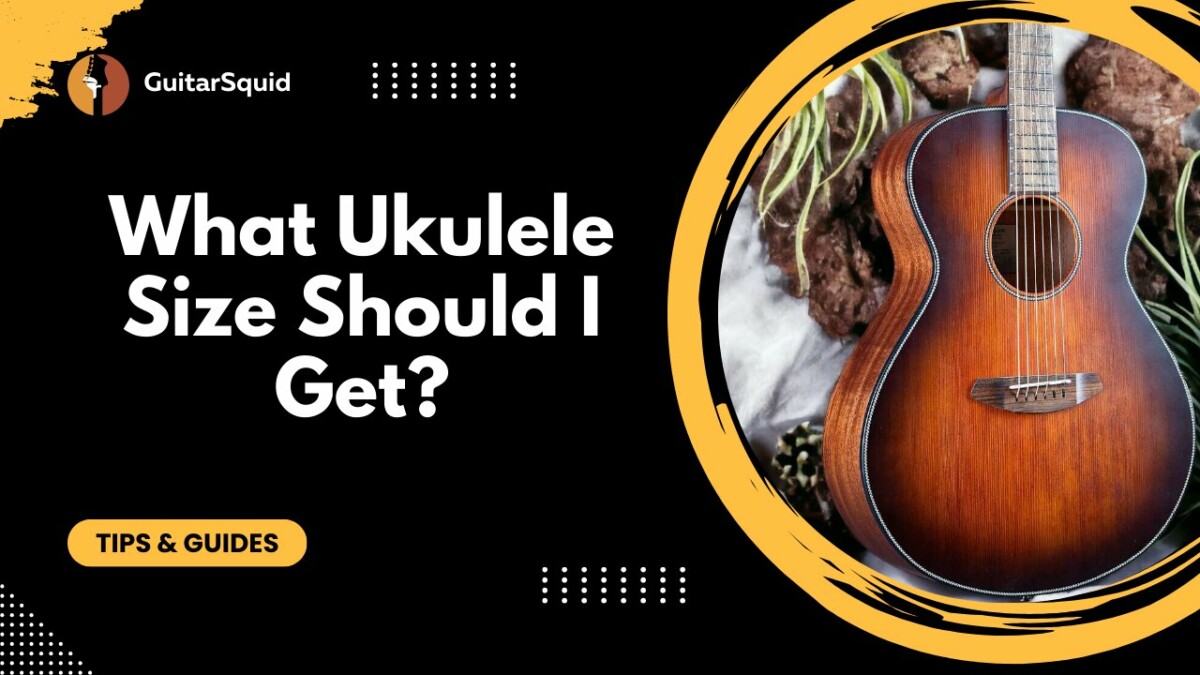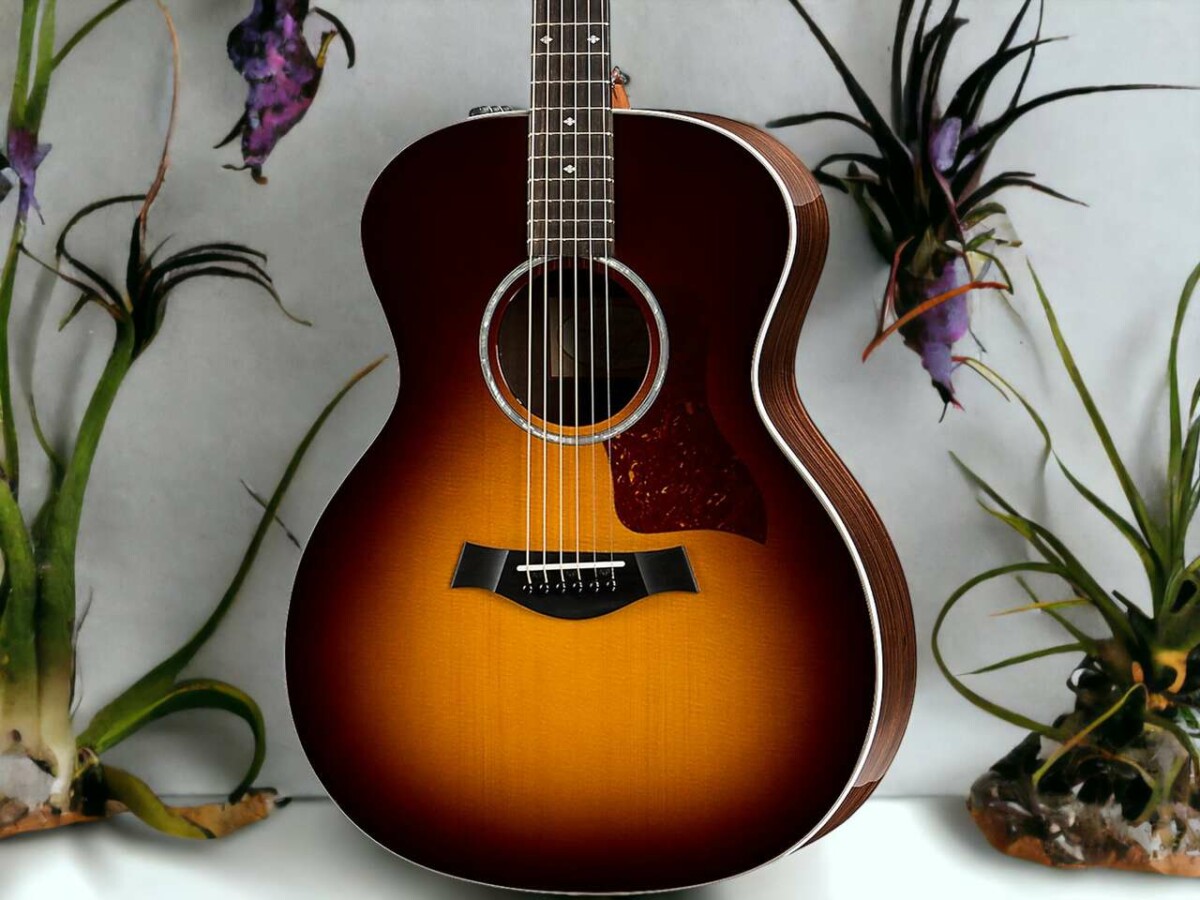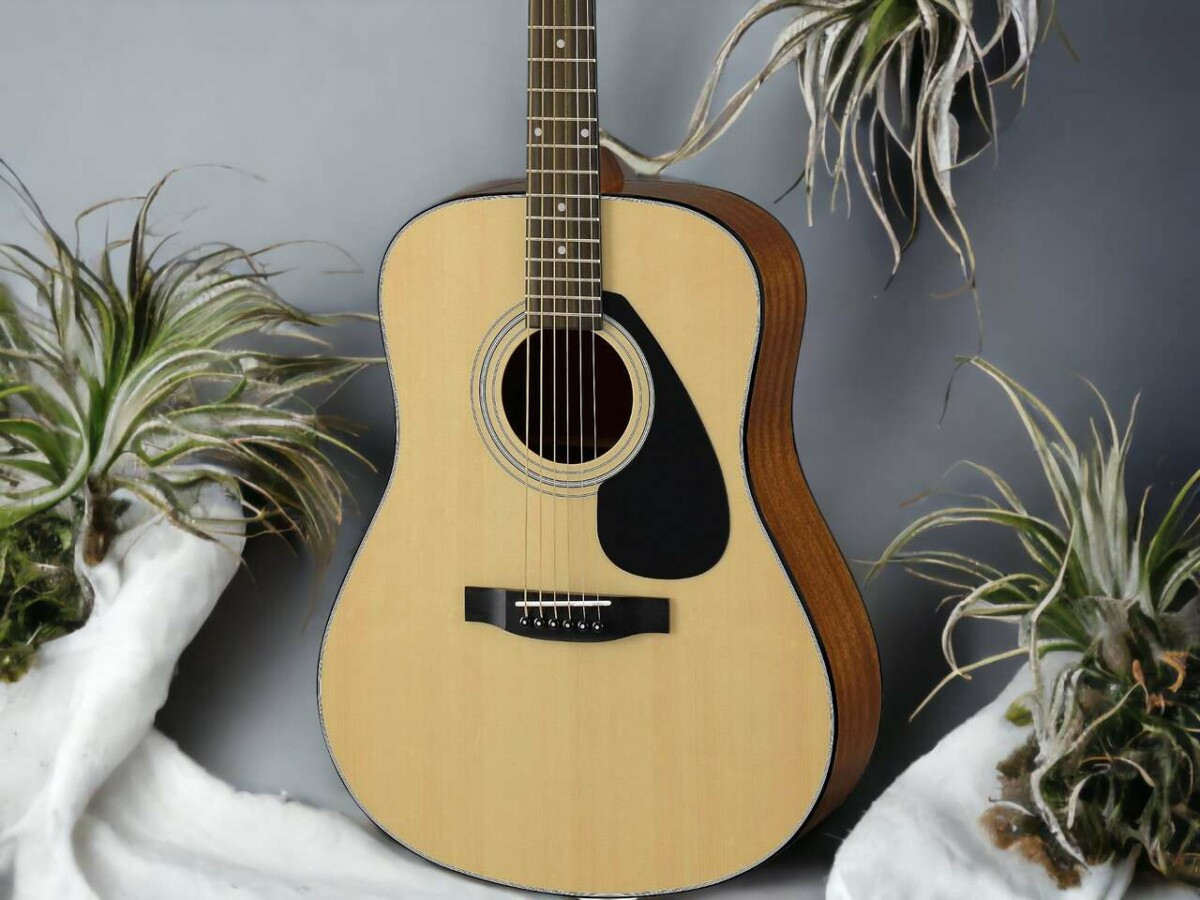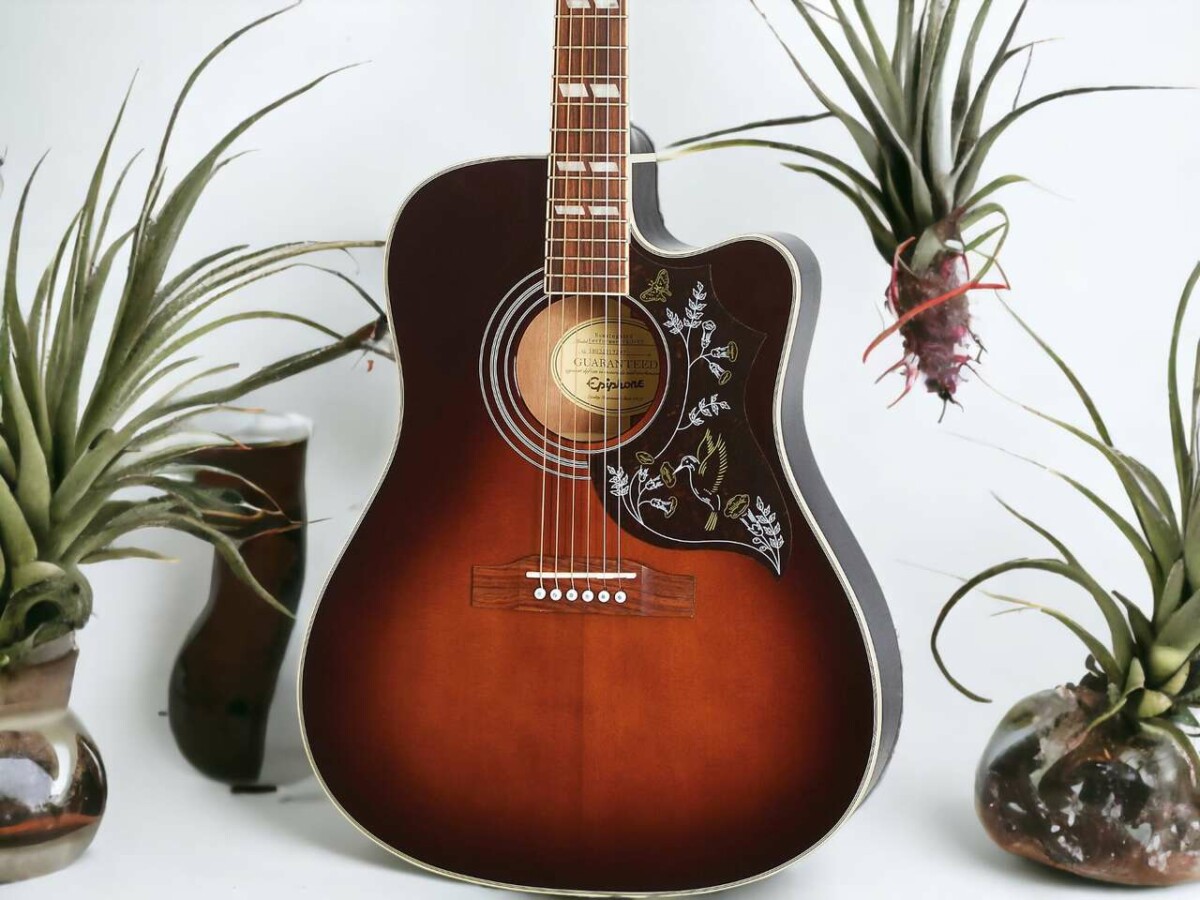You’re pumped, you’re psyched, but you’re utterly clueless. Which ukulele size is the right one for you?
No worries though! Whether your hands are petite or your fingers are long enough to be a pianist, there’s a ukulele out there that’ll fit you better than your favorite pair of jeans.
You might be eyeing the concert size, but let’s be real, comfort is key here.
So, how about you dive in, mix it up, and truly relish the journey of discovering your ideal match? Because finding the perfect ukulele size isn’t just about the melody—it’s about the vibe you get when you strum those strings.
How to Choose the Correct Ukulele Size?
Ukulele sizes range from soprano (the smallest), through concert and tenor, to baritone (the largest). Your choice should be influenced by your preferred sound quality, hand size, and instrument comfort.
So, you’re on the hunt for the perfect ukulele, huh? Well, there are four main sizes you gotta know about before you dive in. We’ve got soprano, concert, tenor, and baritone. Each one’s got its own unique vibe with different body dimensions, fretboard lengths, and tones. It’s kind of like dating, you gotta find the one that vibes with you the most.
Now, don’t just go for the first one you see. Take your time, explore different options. The soprano size is like the OG, it’s lightweight and gives off that iconic, cheery ukulele sound. But hey, if you want a bit more oomph and room for your fingers to dance on the fretboard, the concert size might be your jam.
For the pros out there, tenor size is a crowd favorite. It’s got a rich tone and more room between the frets. And if you’re into that guitar-like sound, the baritone is your guy. It’s got a lower range and kinda steps away from the traditional ukulele sound.
But hold up, before you make a decision, consider some things. Like, what size are your hands? Do you have long fingers? If so, you might find tenor or baritone ukuleles more comfy because of their wider fret spacing. On the flip side, if you’re all about that bright, bubbly sound and easy portability, you might wanna stick with a soprano or concert size.
Also, don’t forget about chord progressions. The baritone ukulele, for example, marches to the beat of its own drum with its unique D-G-B-E tuning. Yeah, it’s different from the standard G-C-E-A tuning on the other sizes, and it’s gonna change up the chord shapes you gotta learn.
At the end of the day, it’s all about finding the right fit for you. So go ahead, try out different sizes. Who knows, you might just strike the right chord!
The Role of Personal Preferences and Hand Size
When it comes to picking out the perfect ukulele, your hand size and personal preferences are major players in this game. Your hand size isn’t just about measuring up, it directly impacts how comfy you’ll be and how smooth your chord transitions will be.
Ever tried playing a soprano ukulele with big hands? It’s like trying to text on a tiny phone with gloves on. On the flip side, if your hands are more on the petite side, a tenor or baritone ukulele might feel like you’re navigating a giant’s guitar.
But it’s not just about size. Your understanding of music theory and chord progressions can help guide you to the right ukulele. The concert ukulele, for instance, is a total crowd-pleaser for beginners due to its balance of easy playability and solid sound quality. But hey, don’t box yourself in. Take a look at different sizes, neck widths, and string spacings. Hold it, strum it, listen to its voice.
You see, there’s no one-size-fits-all answer to ‘Which ukulele should I get?’ It’s more about finding the perfect match for you. Think about the kind of music you want to play. If you’re into a deeper, richer sound, the baritone ukulele – which is tuned differently than the others – might just be your jam.
And remember, it’s not just about the destination, it’s about the journey. So, don’t rush it. Play around with different sizes, and most importantly, have fun with it. Buying a ukulele isn’t just a purchase, it’s a new way to channel your creativity.
The Popularity of Concert Size Ukuleles for Beginners
Here’s the scoop: the concert ukulele is a total newbie magnet. It’s got this sweet spot, where ease of play meets great sound, which is why it’s a top pick for beginners.
One of the best parts? It’s got wider string spacing and a neck width that’s super comfortable, making it a breeze for those just getting to grips with chord progressions and figuring out where their fingers go.
But here’s the kicker, the range of neck profiles isn’t all that wide. That’s why it’s a good idea to shop around and try out different sizes. You never know, you might just stumble upon the ukulele that feels like it was made just for you.
Concert Size: Beginner’s Choice
Jumping into the ukulele scene can be a bit overwhelming at first, right? But the word on the street is that concert size ukes strike the perfect balance between playability and sound quality, which makes them a big hit among the newbie crowd. Trust me, finding the right uke that sings to your soul is a game-changer.
So why are concert ukes all the rage for beginners? Here are the top four reasons:
- Size Matters: Okay, so concert ukuleles are a bit bigger than soprano ones, which means you get more fret space for your killer chord progressions. But they’re also smaller than tenor ukes, so they’re not too intimidating for newbies. It’s like the Goldilocks of ukuleles – just right.
- Sound: The sound they kick out is rich and full, which is music to anyone’s ears. Plus, it helps you get your head around music theory.
- Versatility: Whether you’re into pop or you’re vibing with traditional Hawaiian tunes, these ukes can handle it all.
- Comfort: Thanks to their not-too-big-not-too-small size, they sit comfortably in your hands which means you can jam for longer.
Remember though, everyone’s different, so what works for one person mightn’t work for another. So, go out there and explore until you find your perfect uke match.
Balanced Playability and Sound
Let’s dive in and unpack why the concert size ukulele is usually the go-to for beginners. It’s all about that perfect harmony between playability and sound quality.
On one hand, the size, weight, and shape of the ukulele play a big part in how easy it’s to play. On the other hand, the concert size ukulele nails the sweet spot between all these factors. It’s big enough to deliver a rich, full sound that’ll leave you wanting more, but still compact enough for any beginner to manage without breaking a sweat.
What’s even better is that your fingers will have an easier time dancing between the frets, making it a breeze to master chord progressions without feeling like your hands are working overtime. Plus, the concert size comes with a killer advantage – it strikes the right balance between sound quality and comfort. Seriously, it’s like the Goldilocks of ukuleles, making it a no-brainer for anyone just starting out.
Just keep in mind, finding that perfect balance is key in your ukulele journey. It’s like finding your rhythm on the dance floor, once you’ve got it, nothing can stop you.
Limited Neck Profile Variety
Just a heads up for you uke newbies out there, the concert size ukulele, popular as it is, doesn’t give you much choice when it comes to neck profiles. This might seem like a minor detail, but trust me, it can totally make or break your playing experience and how smoothly you can strut through those chord progressions.
Here’s what you gotta know:
- Don’t be afraid to venture out of your comfort zone and check out other ukulele sizes. You just might find a wider range of neck profile options. Bigger ukes, like the tenor or baritone, usually come with wider necks.
- The shape and size of your uke’s neck plays a big role in your grip and control over the instrument. Find one that sits comfortably in your hand, and you’re golden.
- Keep in mind, some neck profiles might be better suited for certain chords or music styles. So, you might want to factor in what genre you’re leaning towards.
- There’s no one-size-fits-all here. So, don’t be shy to test out different uke sizes and neck profiles. It’s all part of the journey, and it’s totally worth it.
Exploring the Variety in Beginner Concert Ukuleles
When you’re just starting out on your ukulele journey, a concert size uke often catches your eye. It’s got this sweet spot between ease of play and sound quality that makes it a newbie’s best friend. But hey, don’t just grab the first one you see – there’s a whole world of variety to dive into.
Let’s talk about nut width. It’s the distance across the top of the uke’s neck and it can totally change up your playing game. If you’ve got bigger hands or chunky fingers, a wider nut might be your jam. It gives you a bit more room between the strings, making it easier to form those tricky chords. But if you’re on the petite side, you might vibe more with a narrower nut. Just keep in mind it could make some chord progressions a little harder due to the tighter string spacing.
Then there’s string spacing – another biggie. Extra space between the strings can make it easier to hit individual notes clean, especially if you’re getting into complex chords or fingerpicking. But if you’re all about speed and fast chord changes, you might get along better with narrower string spacing. Just remember, it could make it harder to get clear note articulation.
The connection between nut width and string spacing is key to finding a uke that feels good in your hands and meets your playing needs. And don’t forget about string material and tension – they can totally change up the sound of your instrument and how easy it’s to produce clear, consistent notes.
The bottom line? There’s no one-size-fits-all when it comes to the perfect uke. It’s all about finding your own personal sweet spot – a uke that not only sounds great but feels right in your hands. So get out there and explore the range, and find the uke that makes your heart sing.
Utilizing Beginner-Friendly Apps for Learning and Practice
Alright, you’ve snagged yourself a ukulele and are ready to rock it. The journey is going to be pretty dope if you incorporate some cool apps that are beginner-friendly. Let’s delve into how to pick the right app to level up your learning experience with guided lessons and practice sessions.
- Yousician: This nifty app gives you real-time commentary on your playing – it’s like having a personal coach right there with you. Plus, it’s loaded with a bunch of songs you can jam to.
- Ukulele by Roadie: If you’re just starting out, this one’s a gem. It guides you through chord progressions and strumming patterns in a simple, no-brainer way, making learning new tunes a breeze.
- Perfect Ear: If you’re keen on getting into the nitty-gritty of music theory, Perfect Ear has got you covered with ear training and rhythm exercises. These are core skills for any musician, so it’s worth checking out.
- FretTrainer: Get ready for a fun, interactive ride with this app. It’s all about learning the fretboard, a crucial part of mastering the uke. You’ll be playing around with notes, scales, and chords in a game-like setting.
Remember, the best app for you is going to be the one that suits your needs. If chord transitions are giving you a hard time, find an app that excels at chord libraries. If videos are your go-to learning method, then go for an app that offers video lessons. These resources can really amp up your practice sessions, especially when you’re just finding your footing.
As you get better, don’t be shy to branch out. Experiment with new apps, challenge yourself with trickier songs, and enjoy the ride. After all, mastering the ukulele isn’t just about the instrument—it’s about letting your unique musical style shine.
The Importance of Embracing the Learning Process and Overcoming Challenges
As you start strumming away on your ukulele, remember it’s all about embracing the journey of learning and tackling those pesky challenges head-on.
You’re going to come across some gnarly chord progressions and the intricacies of music theory might’ve you pulling your hair out.
But hey, don’t stress about it! This is all part and parcel of getting really good at this.
Just think of it this way – the bumps you’re hitting today are just stepping stones to you absolutely nailing it tomorrow.
Dealing With Initial Challenges
As you’re on your quest to find the perfect ukulele size that feels like a comfy old sweater, be prepared to bump into a few roadblocks. Spoiler alert – these challenges are super important in your journey to becoming a ukulele rockstar.
One of the first things you’ll notice is that your fingers might feel like they’ve been doing a thousand push-ups as you build up that strength and adjust to the different tensions of the strings.
Here’s a cheat sheet for you:
- Patience: The road to becoming a ukulele master isn’t a sprint, it’s a marathon. Learning those chord progressions and muscle memory is like learning a new language. Take your time.
- Practice: Strumming those strings regularly will be like a workout for your fingers. They’ll get stronger and will be able to handle the tension of those ukulele strings like a pro.
- Theory: Diving into the world of music theory will be like getting a map of the ukulele’s fretboard. It’ll make navigating those notes a whole lot easier.
- Persistence: Keep on trucking, no matter how hard it gets. Every challenge you conquer is another step towards becoming a better player.
Embracing Learning Process
Alright, you’ve nailed the basics, but let’s be real, getting a grip on the learning process is a game changer in your ukulele adventure.
It’s not just about choosing the right size – it’s a whole journey of trying out different sizes, finding that sweet spot of comfort, and getting the hang of the distinct chord progressions each size brings to the table.
Keep in mind, the size of your hands and your comfort level can totally make or break your playability.
Maybe you’re vibing with the concert size, with its killer sound quality and easy playability. Or maybe, the wider neck of a tenor feels more like your jam.
Don’t be put off by the lack of beginner-friendly options, go out there and try new things until you find your perfect fit.
Overcoming Ukulele-playing Hurdles
As you dive into the world of ukulele playing, remember that mastering this instrument is a journey full of ups and downs – but hey, that’s what makes it all the more rewarding. You’re bound to face issues like adjusting to the size of your hands or figuring out how the string spacing works, but don’t let these hiccups throw you off course.
- Size Matters…Or Does It?: Whether you’ve got small hands or could palm a basketball, there’s a ukulele out there that’s just right for you. Try out different sizes – you’ll never know which one is your perfect match until you’ve strummed a few chords on it.
- String Spacing: This one’s all about personal preference. Are you more comfortable with wider or narrower spacing? The only way to find out is by jamming on a variety of ukuleles.
- Chord Progressions: Remember, Rome wasn’t built in a day. Start with simple progressions and as you get the hang of it, slowly level up to the complex ones.
- Musical Theory: Don’t be scared of it – it’s not as intimidating as it sounds. Even a basic understanding can take your playing game to a whole new level.
Every hurdle you overcome is a milestone on your journey to becoming a skilled ukulele player. So, keep strumming and keep learning!






